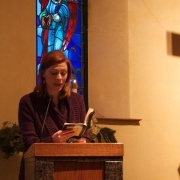Ann Beattie’s writing evokes an idea of the ’70s for me.
I say that because I don’t remember much of the decade itself, but there’s an idea I get about the ’70s; a sort of feeling that makes me think of straight hair parted in the center, fondue pots, and kitchen appliances painted pea-green, orange and chocolate brown.
I don’t know why, but when I think of the ’70s, I also think of depression. Maybe it’s the color schemes I’ve seen in pictures, or the disillusionment
following Watergate, or maybe I somehow think that ’70s represent a post-Summer of Love hangover. But I get a sense of depression from the ’70s in the same way I think of cheesy euphoria when I think of the ’80s. When I look at photos from the ’70s its always hard for me to believe that only 10 years earlier many of these same folks were wearing flannel suits and day dresses. It’s almost like everybody stopped trying.
Now, I know this is not fair or true,
but Beattie’s writing reinforces these ideas for me. I’ve read two of her books this semester, Distortions and Chilly Scenes of Winter. Her writing is bleak and spare. She doesn’t give us more than we need, and, in fact she doesn’t even tell us what people look like. Which is what my essay, below, is about.
Craft Essay: The invisible protagonists of Ann Beattie
In 1980, Joyce Maynard of The New York Times visited the home of Ann Beattie to interview the author. During the course of the interview, Maynard asked Beattie why she so seldom gave physical descriptions of her protagonists, instead giving detailed descriptions of the music being listened to or the food being eaten. Beattie replied that she didn’t do this intentionally, but added that she didn’t feel any need to force physical descriptions of her protagonists on the readers.
“I guess I just see the person so clearly,” she said. “I don’t feel any need to describe him. Whereas the other things in my peripheral vision are easy to seize upon and sort of bring into focus. Then too, I figure if they’re playing John Coltrane and are stoned, they’re not wearing anything from Brooks Brothers.”
Josip Novakovich, in his Fiction Writer’s Workshop, tells us that “Image is not everything, but it does account for a lot.” (p. 53) He tells us that the physical appearance of a character can hint at the central conflict of a story. James Frey, author of How to Write a Damn Good Novel, is more emphatic. “Society shapes our character based on our, appearance, size, sex, build, skin color, scars, deformities, abnormalities, allergies, posture, bearing, lilt in the voice, sweetness of breath tendency to sweat, nervous ticks and gestures and so on,” writes Frey. “To develop a fully rounded character, you must understand the character’s physiology completely.”
This is true; a writer must know the character about whom she writes. But I do not think the writer is under any obligation to fully describe that character. As a reader, nothing annoys me more than the sort of graceless description that drags me through a character’s appearance. I enjoy the mental energy that Beattie’s approach requires of me.
In her 1974 short story collection Distortions, Beattie presents us with a parade of memorable characters, but she rarely shows them to us. In some cases, we can infer what the characters look like. In others, we do not need to know.
One of these latter cases is the family at the center of “Snakes’ Shoes.” Beattie tells us that father, mother, child, infant and uncle are sitting on a flat rock in a pond. She even describes how they are sitting. The child is sitting between her uncle’s legs. The divorced parents sit next to them. The mother is holding her 10-month-old baby. We can see their outlines and the space they occupy on the rock, but we cannot see them. As a reader, I do not think we need to see them. They could be any family; they could be a family we know. We don’t begin to get a physical description of them until later, when Sam’s flashback takes us into the couple’s past. Alice, at her engagement party, is wearing a lacy beige dress. Her shoes sparkle. She is, he thinks, “very pretty.” (p. 28) We find out later that Alice’s hair lightens in the sun. (p. 32) That is all we learn about her looks. We get our first descriptions of the little girl six pages into the story when Beattie says she’s wearing a blue nightgown. Later, she is described as having brownish-blonde hair (p. 32), and knees that stick out (p. 33). Her uncle thinks that she won’t be as pretty as her mother. The two men in the story are invisible, but Beattie’s lack of attention to their looks and slight emphasis on the looks of the two females drives home a point. Uncle Sam is attracted to Alice.
In “Eric Clapton’s Lover,” we are presented with a couple, Franklin and Beth Fisher. Rather than giving us their physical characteristics, Beattie gives us their diets: Franklin eats soufflés, quiche and pea soup, while Beth likes chiles relenos, gazpacho and enjoys a cold Bass. Only then — and from Franklin’s standpoint — do we get into Beth’s appearance. She has fat hips and mannish arms. Several pages later, we are told she has gained more weight. We can infer what her husband looks like from what he eats. Franklin’s lover is the only person who is ever really described. She is described as if she were a doll; she wears orange lipstick and bright blue shoes and she has a broken tooth. She is little more than an object to us, just as she is to Franklin.
In “Dwarf Houses” the title of the story drops the hint that James is a dwarf, as does the fact that he is standing on a chair in the opening scene. But we are not told outright about his dwarfism until his brother, McDonald, says so on page 16, which is two pages into the story. We never know what McDonald, his wife or his mother look like, and beyond James being a dwarf, we don’t know what he looks like either.
In “Fancy Flights” and “Downhill” we are presented with one character suffering from drug addiction and another who is recovering from a nervous breakdown. Neither is shown to us, although Beattie does not shortchange us on the squalid details of their lives. They are not clean. One has no food. The other sits on the ground with the dog and does not wash her hair. As a reader, I don’t need Beattie to show me these characters; the insides of their heads are most interesting to me.
As a writer, I agree with Beattie’s technique. When I read a story in the first or second person, I want to be able to step into the “I” or the “you” that serves as my point of entry to the narrative. If, as a reader, I am able to effectively step into the head of the first person narrator, I don’t need to see that narrator. What is more important is that I clearly understand the motivations of the first person narrator, and that I clearly see the surroundings of that person.
Novakovich likens the descriptions of George Eliot to paintings and the work of Yukio Mishima to a cameo. If I had to choose a style in art to represent Beattie’s work, I think it would be the Moulin Rogue posters of the 1890s. Like Henri Toulouse-Lautrec, Beattie roughs out the central characters’ forms for us, and uses her scenes to provide us with color. If the readers want to fill in the gaps in the central characters, using the colors she’s provided, that’s up to us.



Thank YOU for reading my essay, Hilts!
Thank YOU for reading my essay, Hilts!
I’ve always loved Beattie, and now I am thinking about her in a new way. Thanks, AJ!